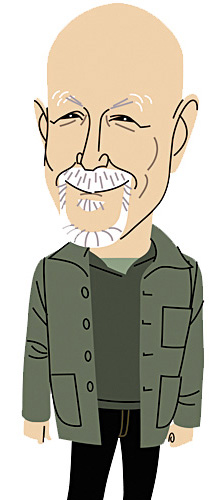 Yes, there is. But there are good reasons why you might not know what to look for. Sometimes the obvious isn't really so obvious after all, and energy efficiency is a case in point.
Yes, there is. But there are good reasons why you might not know what to look for. Sometimes the obvious isn't really so obvious after all, and energy efficiency is a case in point.
Federal and state regulators, some environmentalists, utility companies, and manufacturers have adopted a simple formula for improving environmental performance. They recognize that habits are hard to break, and that expecting consumers to educate themselves about new products isn't very realistic.
So, the idea is to make the products themselves more energy efficient so that consumers won't have to make informed choices. It sounds easy, doesn't it? All we have to do is go about our business and, as if by magic, we are using less energy without even realizing it.
The Results are In
Guess what: it works. In the early 1970s, lawmakers in California began legislating energy efficiency across a wide range of products. They've touched everything from homes and office buildings to lighting to household appliances to TVs. The results are pretty dramatic.
Since the early '70s, the amount of electricity used by the average Californian has remained constant, even as they've started using personal computers, smart phones, home security systems, and bought bigger houses and bigger screen TVs. Meanwhile, per capita electricity use in the rest of the country more than tripled!
Of course, regulations only set minimum standards for efficiency. So, just like you, many people wonder which products are Greener than others.
Look for the Energy Star Logo
The U.S. Environmental Protection Agency set out to solve this problem in 1992 with the Energy Star program. Now in its 20th year, Energy Star is a voluntary, competitive certification program for energy efficient products, homes, and commercial buildings.
To earn the Energy Star label, a product must go through rigorous third-party testing to ensure that it meets the standards, and the EPA also tests products off the shelf from time to time as well. As a result, you can trust that the label points to genuine market-leading energy performance.
And performance is what Energy Star is all about. The program's goal is to keep improving energy efficiency year after year after year. Once roughly 50 percent of the products in a category earn the Energy Star label, the EPA increases the efficiency requirements, and manufacturers must improve efficiency further in order to earn the label again.
In other words, Energy Star is not a "one and done" certification. It keeps raising the bar as quickly as industry advances. And the results have been stunning. In 2012 alone, Energy Star saved 2,250 billion kWh of electricity and reduced the nation's greenhouse gas emissions by nearly 1,900 million metric tons.
Energy Star has been a success with consumers too. Americans have purchased more than 4.5 billion Energy Star-certified products since 1993, with the largest shares in electronics and office equipment.
Energy Star on the Show Floor
The bottom line is, if you are considering anything from a printer to a vacuum cleaner to a refrigerator for your storage room, choose one with the Energy Star label. But the most common applications for most exhibitors are video monitors and lighting. In both cases, LED technology is the efficiency leader today and you are likely to find exactly what you are looking for with an Energy Star tag in the corner.




 How can I know if we're using the most energy-efficient products in our booth? Is there an easy way to tell?
How can I know if we're using the most energy-efficient products in our booth? Is there an easy way to tell? Yes, there is. But there are good reasons why you might not know what to look for. Sometimes the obvious isn't really so obvious after all, and energy efficiency is a case in point.
Yes, there is. But there are good reasons why you might not know what to look for. Sometimes the obvious isn't really so obvious after all, and energy efficiency is a case in point. 


